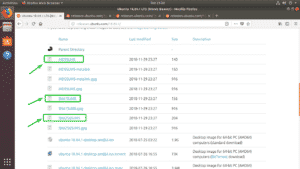
If you need examples of creating base64 hashes using HMAC SHA256 in different languages (Javascript, PHP, Java, Groovy, C#, Objective C, Go, Ruby, Python, Perl, Dart, Swift, Rust, Powershell, Shell), read this post.
Sha1 checksum generator#
HgVRhIBbSkZqe+OY/0pxWfkFXqfu8zn8lNzsbxZYmLo=ĭebug.Print Base64_HMACSHA1("abc","1234567890")Ĭheck result here: Online HMAC Generator Base64 HMAC SHA256 in different languages Optionally create a SHA-1 checksum of your files.
Sha1 checksum free#
Set objNode = objXML.createElement("b64")ĭebug.Print Base64_HMACSHA256("abc","1234567890") Generate a SHA-1 hash from your sensitive data like passwords with this free online SHA-1 hash generator. This will give you access to the XML Object Library.) A SHA-1 hash value is typically expressed as a hexadecimal number, 40 digits long. SHA-1 produces a 160-bit (20-byte) hash value.

When a file is run through a hashing algorithm, a sequence. SHA-1 (160 bit) is a cryptographic hash function designed by the United States National Security Agency and published by the United States NIST as a U.S. Learn about SHA1: is it secure, what is a collision attack. 'Inside the VBE, Go to Tools -> References, then Select Microsoft XML, v6.0 What is a hash Hashes are the product of cryptographic algorithms of varying complexity. SHA1 generator online - calculate SHA-1 checksums and generate a SHA-1 hash from any string. Private Function EncodeBase64(ByRef arrData() As Byte) As String Public Function Base64_HMACSHA1(ByVal sTextToHash As String, ByVal sSharedSecretKey As String) SharedSecretKey = asc.Getbytes_4(sSharedSecretKey) This will give you access to the XML Object Library.) Public Function Base64_HMACSHA256(ByVal sTextToHash As String, ByVal sSharedSecretKey As String) At this time, there is no need or plan to transition applications from SHA-2 to SHA-3.Inside the VBE, Go to Tools -> References, then Select Microsoft XML, v6.0 (or whatever your latest is.

SHA-3: When the SHA-3 hash algorithm becomes available, it may also be used for all applications that employ secure hash algorithms. Further guidance on the use of SHA-1 is provided in SP 800-131A. Federal agencies may use SHA-1 for the following applications: verifying old digital signatures and time stamps, generating and verifying hash-based message authentication codes (HMACs), key derivation functions (KDFs), and random bit/number generation. SHA-1: Federal agencies should stop using SHA-1 for generating digital signatures, generating time stamps and for other applications that require collision resistance. Guideline for using the XOFs will be provided in the future.Currently there is no need to transition applications from SHA-2 to SHA-3. The SHA-3 Extendable-Output Functions (XOFs), SHAKE128 and SHAKE256, can be specialized to hash functions, subject to additional security considerations. SHA-3 ( i.e., SHA3-224, SHA3-256, SHA3-384, SHA3-512, SHAKE128 and SHAKE256 ): Federal agencies may use the four fixed-length SHA-3 algorithms- SHA3-224, SHA3-256, SHA3-384, and SHA3-512 for all applications that employ secure hash algorithms. Further guidance on the use of SHA-2 is provided in SP 800-57 Part 1, section 5.6.2 and SP 800-131A.

NIST encourages application and protocol designers to implement SHA-256 at a minimum for any applications of hash functions requiring interoperability. SHA-2 (i.e., SHA-224, SHA-256, SHA-384, SHA-512, SHA-512/224 and SHA-512/256): Federal agencies may use these hash functions for all applications that employ secure hash algorithms. SHA-1: Federal agencies should stop using SHA-1 for generating digital signatures, generating time stamps and for other applications that require collision resistance.


 0 kommentar(er)
0 kommentar(er)
